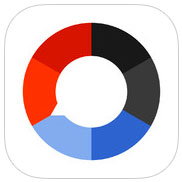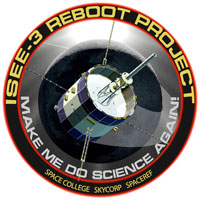
The new search technologies Google unveiled recently put a mobile-flavored twist in the company’s desktop search engine, including a new voice search capability. Google also announced the ability to search by an image and a feature called “Instant Pages” that leads to even speedier search results.
Many of the new reveals come in response to the shifting way in which consumers are using search engines. The number of online searches originating from desktop computers decreases during evenings, weekends and summer months, according to analysts tracking traffic.
That doesn’t mean all search traffic stops though — with the explosion of smartphones in the marketplace, online searches from personal mobile devices has experienced rapid growth recently.
During his announcement of some of the new features, Amit Singhal, a Google software engineer, told guests mobile search traffic grew five-fold in the past two years. That rapid pace, he said, was comparable to Google growth at its inception.
The new releases are meant to be a nod to users relying more and more on mobile devices with high searchability.
“This is Google sort of paying attention to their core business and improving their primary product that makes them money,” Andrew Eisner, director of community and content at Retrevo, told TechNewsWorld.
Google did not respond to TechNewsWorld’s request for further comment by press time.
Voice Search
Google’s desktop voice search, available to Chrome 11 users within the next few weeks, lets the user speak into the computer to complete a search.
The program is designed to incorporate long, multi-word phrases, but like other voice technology, it would be difficult to accommodate symbols such as quotation marks.
Google underscored the feature’s usefulness for hard-to-spell searches, longer queries, and its ability to to search in a moment when the user may have his or her hands full.
The search can be activated using a small microphone button located in the search window.
Questions have been raised regarding whether the lack of full search functions will stop the feature from catching on to a mass audience. There’s concern about the complexity of the task of running a sophisticated search and a voice interface’s ability to be fully functional.
“Nobody is currently able to serve relevant results for speakers in all environments. There are two limiting factors. The first is the stigma around voice recognition technology where the general consensus is that voice recognition technology does not work,” Marcel Smit, vice president of natural language solutions at RightNow, told TechNewsWorld.
The second limiting factor, according to Smit, is a larger problem with Google search technology and its focus on keywords rather than intent when searching any given topic.
“Voice search is never going to be better than the normal Google engine, and as natural language is not being used, the user will be forced to speak to their search engine with keywords instead of just asking what they want,” said Smit.
Image Search
Another reveal was Google Search by Image, a feature that lets users search the Web using a specific photo. That photo could be uploaded by the user, dragged from the desktop or another part of the Web, or entered as a URL from another website. The results yield similar images, so a user can figure out, for instance, where an old family photo was taken or which company a particular logo belongs to.
The feature is rolling out in 40 languages and will feature Chrome and Firefox versions that allow any image to be searched with a click.
The Search by Image could catch on quickly, even though it’s perhaps not at its most efficient stage yet.
“Real picture search would be a fantastic innovation to the search market. But what is currently released is a long way short of true picture search. True picture search does not return similar pictures, but instead different pictures of the same topic. This requires, amongst other things, facial recognition — not included in this release,” said Smit.
Still, he said, the current Search by Image feature could be a huge step toward that ultimate goal.
Instant Pages
Google also announced renewed focus on a common theme: speed.
To shave yet another fraction of a second off the time between the moment a user begins a search and the moment he or she arrives at the correct page, Google unveiled Instant Pages, a feature that pre-loads the top search result in the background before the user clicks on which link they’d like to continue with. The supposition is that the top result is most likely the one the user wants to go to.
The feature uses prerendering technology in Chrome to function.
“Google has always prided itself on being the fastest search experience, that’s one of the reasons why it keeps its search page so simple,” said Eisner.
Although speed is essential to consumers, the results could be overwhelming to the average user, and the amount of results that comes up could be slowing the process down.
“More time is spent on first processing the often long lists of results, and then processing complete documents to find the information needed, then on waiting for a page to load. So pre-loading the first page may help, but to really make a big difference, the search should not return hundreds or thousands of documents, but rather a handful of short answers — or just one,” said Smit.
In addition, a more rapid response could lead to users typing in fewer keywords, which doesn’t help Google in terms of one of its biggest moneymakers — using keywords to direct which types of ads appear to users.
“The sooner they send you to the actual website, the fewer keywords you use, which could be a little counteractive,” said Eisner.
While it’s still unclear whether any of the newest features, at least in their current stages of production, will catch on to the mass marketplace, they are being received as innovative technologies that could be the first steps toward more mainstream features that will be used by a loyal group of Chrome users and technology junkies.
“Whether or not these become essential tools to every user’s experience remains to be seen, but they can be fun and useful technologies to a certain group right now,” said Eisner.





















































